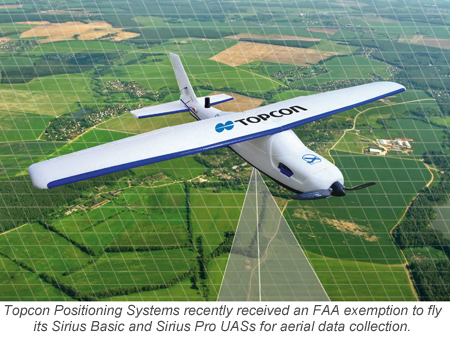 It is against the law to fly a commercial drone or unmanned aircraft system (UAS) without approval and waivers from the Federal Aviation Agency (FAA). No flying over your proposed subdivision to do survey or photo work without having a Section 333 exemption from the FAA and filing a Certificate of Authorization or COA. No survey or mapping or daily flights to track work progress on the construction site without filing a COA. No flights above 500 feet off of the ground. No flights that do not meet FAA visual flight rules (VFR), meaning that the operator must be able to see the drone at all times during the flight without using any Go Pro or other camera to track it. No autonomous flights, and the drone cannot weigh more than 55 pounds fully loaded.
It is against the law to fly a commercial drone or unmanned aircraft system (UAS) without approval and waivers from the Federal Aviation Agency (FAA). No flying over your proposed subdivision to do survey or photo work without having a Section 333 exemption from the FAA and filing a Certificate of Authorization or COA. No survey or mapping or daily flights to track work progress on the construction site without filing a COA. No flights above 500 feet off of the ground. No flights that do not meet FAA visual flight rules (VFR), meaning that the operator must be able to see the drone at all times during the flight without using any Go Pro or other camera to track it. No autonomous flights, and the drone cannot weigh more than 55 pounds fully loaded.
Oh yes, and no flights within five miles of any airport or heliport without a call to the tower for approval. Boy, the FAA takes all the fun out of the newest toys. You can, if you are serious about using this technology to save time and make money for yourselves and your clients, file for a Section 333 exception. According to Dee Ann Divis in a recent article for Inside Unmanned Systems, 53 companies have received exemption that will allow you to fly drones for profit. But the FAA still requires you to fly by the rules listed above. And you still have to file a COA flight plan for the drone just like you would if you were going to fly your Cessna on a blue bird Sunday afternoon.
You can imagine the response from both the folks who want to integrate drones into their businesses and those who want to do test flights for drones that they are developing for the market. The waiting times for Section 333 exemptions for flights quickly stretched well past the 60-day target that the FAA originally set as their goal for the process of approving exemptions.
In response to the overwhelming demand for Section 333 exemptions and COAs for flights, a new FAA ruling just came out that will allow “exempted companies” to fly drones weighing less than 55 pounds to be flown below 200 feet during daylight hours. (That is currently 53 companies.) Needless to say, those 53 exempted companies are happy to see the rule change. They are still subject to the rules we quoted above, but they can fly VFR below 200 feet high without filing a COA.
Now, according to Inside Unmanned Systems, the FAA has almost 700 additional requests for Section 333 exemptions in the pipeline for approval. Sounds like the drone makers are serious about incorporating them into the “for profit” construction business in short order, that is of course if the FAA will exempt them so that they can do their test flights.
Meanwhile, if you are a model airplane buff or just an interested party, you can buy one to fly around your apartment, warehouse, backyard or your neighborhood park. Wonder if those folks have to file COAs? Nope. Integrating new technology into the business world gets complex in a hurry.


